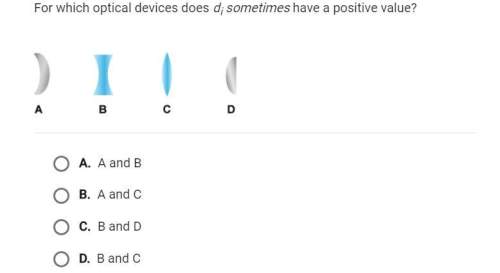Question 3
Light Now click the Light tab.
Part A
On the light tab, once again investig...

Question 3
Light Now click the Light tab.
Part A
On the light tab, once again investigate briefly all the phenomena you explored with water and sound above. Describe any similarities in your
results for light. Specifically describe
• wave pattern as seen on the screen
• shape and amplitude of the graph
• effect of frequency on wavelength
• effect of frequency on velocity

Answers: 3


Other questions on the subject: Physics

Physics, 22.06.2019 03:00, emilypzamora11
If a spring has a k value of 100 newtons per meter and it is stretched 0.50 meters, what is the restoring force of the spring?
Answers: 2

Physics, 22.06.2019 12:00, drivinghydra
Aboat radioed a distress call to a coast guard station. at the time of the call, a vector a from the station to the boat had a magnitude of 45.0 km and was directed 15.0° east of north. a vector from the station to the point where the boat was later found is = 30.0 km, 15.0° north of east. what are the components of the vector from the point where the distress call was made to point where the boat was found? in other words, what are the components of vector c = b - a?
Answers: 3

Physics, 22.06.2019 20:00, teescub9738
In an old-fashioned amusement park ride, passengers stand inside a 3.0-m-tall, 5.0-m-diameter hollow steel cylinder with their backs against the wall. the cylinder begins to rotate about a vertical axis. then the floor on which the passengers are standing suddenly drops away! if all goes well, the passengers will “stick” to the wall and not slide. clothing has a static coefficient of friction against steel in the range 0.60 to 1.0 and a kinetic coefficient in the range 0.40 to 0.70. part a what is the minimum rotational frequency, in rpm, for which the ride is safe? express your answer using two significant figures. f f = rpm
Answers: 1

Physics, 22.06.2019 21:40, Unicorn66y
Wo small variable-thrust jets are actuated to keep the spacecraft angular velocity about the z-axis constant at ? 0 = 1.16 rad/s as the two telescoping booms are extended from r1 = 1.18 m to r2 = 4.69 m at a constant rate over a period of 124 seconds. the small 19-kg experiment modules at the ends of the booms may be treated as particles, and the mass of the rigid booms is negligible. determine the necessary thrust t for each jet as a function of time where t = 0 is the time when the telescoping action is begun. after you have the general expression for t, answer the questions. show work.
Answers: 1
You know the right answer?
Questions in other subjects:



Chemistry, 20.09.2019 06:10






Arts, 20.09.2019 06:10





